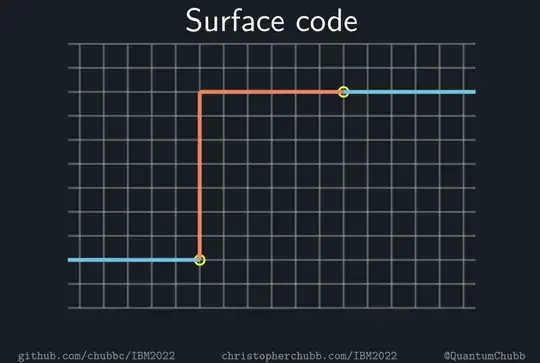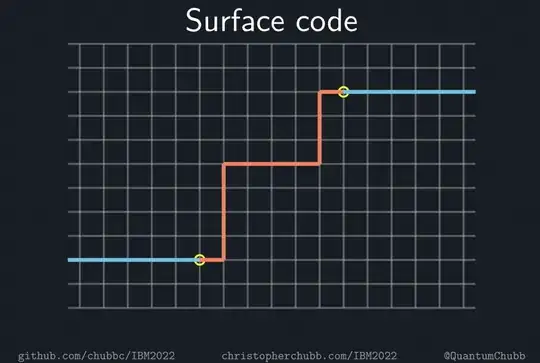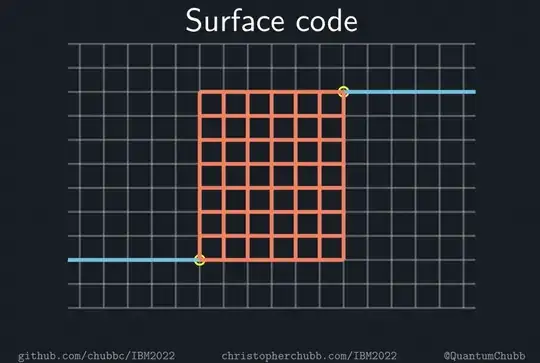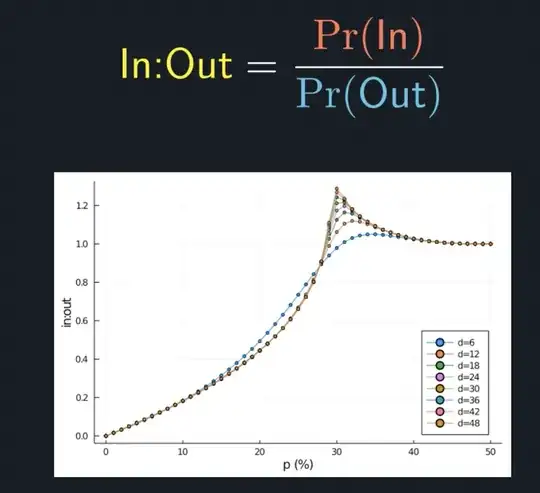I understand that the Minimum Weight Perfect Matching (MWPM) decoder tries to identify the single most probable error configuration, while a maximum likelihood decoder aims to find the most probable coset of errors (those equivalent up to a stabilizer).
I’m looking for a straightforward example on a surface code where MWPM produces a solution that does not lie in the most probable coset. I found some examples with non-uniform error probabilities, but since the surface code threshold is different between the two decoders for uniform error probabilities, I guess there should be an example without using non-uniform error probabilities.
Does anyone have a concrete example or a reference illustrating a case where MWPM selects an error not contained in the most probable coset?



